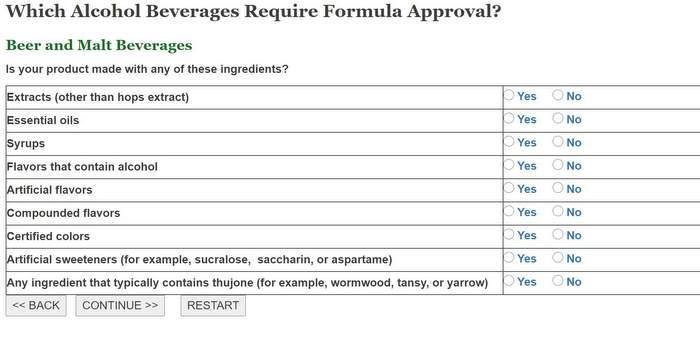Ever felt like your beer had a nutritional leg up on the competition? Well, thanks to a new rule from the Alcohol and Tobacco Tax and Trade Bureau (TTB), soon you will be able to label and advertise your products with said information, if you choose.

Pending the completion of rulemaking on nutrient content statements, TTB will allow the use of either statements of average analysis or Serving Facts statements on labels and in advertisements. The TTB ruling provides guidelines to ensure that the information is presented in a consistent and non-misleading manner.
“TTB believes that it is appropriate to allow the use of optional Serving Facts statements on labels and in advertisements on an interim basis pending the completion of rulemaking. We are making this change to allow industry members to provide truthful, accurate and specific information to consumers about the nutrient content of their products on a per serving basis,” the TTB stated in its ruling.
Although the TTB currently allows nutrient content information to appear on labels and in advertisements in the form of a statement of average analysis, this did not include the ability to voluntarily label products with this information in a Serving Facts statement. A Serving Facts statement, as proposed in TTB Notice No. 73, is merely a statement of average analysis, which TTB already permits, with the addition of:
- A title;
- A serving size that reflects how the product is typically consumed;
- Information about the number of servings per container;
- A specified format; and
- The option of providing information about alcohol content.
The bureau also acknowledged that the serving sizes it previously outlined as average for each product category does not take into account non-standard products, like a 12-ounce can containing a distilled spirit specialty product that is just 5 percent ABV, for example, would not be consumed in the 1.5 ounce serving size for that category. The serving size info for that product might then mislead consumers.
As a result, TTB believes that it is appropriate to consider alternative serving sizes for products depending on their alcohol content and how they are typically consumed, especially where the bottlers or importers of these products are concerned that the serving sizes provided for in TTB Ruling 2004–1 may result in the labeling of their particular alcohol beverages in a manner that does not provide the most complete information to consumers.
For a couple examples of the servings facts displays in question, open this PDF, scroll past the long-winded history of alcohol beverage regulation through the centuries, until you hit page 9.
The Federal Alcohol Administration Act provides for regulation of the labeling and advertising of distilled spirits, wine, and malt beverages to prevent consumer deception, to provide consumers with adequate information as to the identity and quality of the product, and to prohibit false or misleading statements.
The ruling allows “Serving Facts” statements that include the serving size, the number of servings per container, the number of calories, and the number of grams of carbohydrates, protein and fat per serving. Additionally, Serving Facts statements may include information about the alcohol content of the product as a percentage of alcohol by volume and may also include a statement of the fluid ounces of pure ethyl alcohol per serving.
Industry members will not need to apply for new label approval to add a Serving Facts statement if it conforms to the examples contained in the ruling.
TTB is providing this interim guidance on the use of optional Serving Facts statements on labels and in advertisements pending the completion of rulemaking on this matter.




It’s about time! http://t.co/Rolxgk0G3n